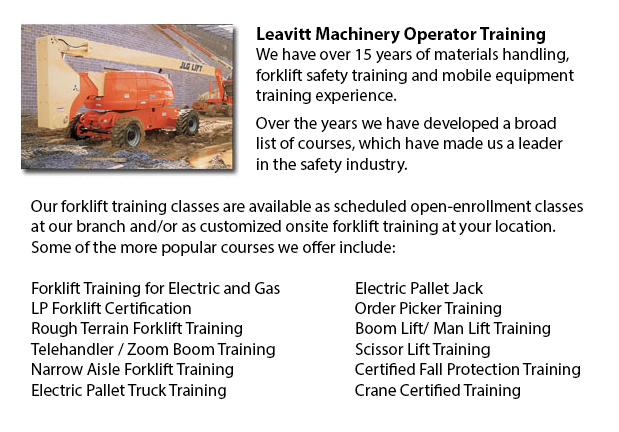
Aerial Lift Certification Surrey - Aerial Lift Certification is for workers who need a thorough knowledge of aerial lift safety. Maintenance workers, construction craftsmen and supervisors require this training to make certain that operators and inspectors are qualified. Provincial, state and federal regulations need businesses to be certified in order to carry out in-house aerial lift inspections.
Most workers who are needed to work at elevated level will often make use of the same means to get to these desired heights, regardless of the kind of work that must be carried out. Scissor lifts and aerial lifts are the mechanized devices used to be able to lift workers and equipment to elevated places.
Bucket trucks called Cherry Pickers are aerial platforms that feature a supported boom and bucket. The primary danger to using this particular kind of platform is normally electrocutions, tip-overs and falls. Certification makes certain that workers who utilize aerial lifts are correctly trained in order to safely operate the machine. Training likewise guarantees that workers know how to maintain aerial work platforms in accordance with the manufacturer's instructions.
Aerial lift training certification programs will consist of the following: Aerial lifts that are mounted to vehicles, Boom-supported aerial lifts and scissors lifts. Trainees would know about safe operating procedures and will gain an understanding about the dangers which normally cause aerial lift incidents. They will be technically competent in the different types of aerial lifts, in addition to components and terms. From selecting the right aerial lift for the job to interpreting rated capacity charts, the certification program would provide workers with all that they need to know in order to carry out their work safely.
Individuals who are assigned the task of checking aerial lift devices need to know how to inspect gears, booms, operating mechanisms, structural components, functions and control systems, braking systems, power plants, shafts and pins, attachments, pneumatic and electric components, hydraulic, operator aids and emergency safety devices, and so forth. Training will consist of the following: the role of the inspector in lessening accidents and liability exposure; how to perform a pre-use, monthly and annual inspection; how to write inspection reports; how to interpret and apply rules regarding aerial lift safety standards; techniques and checklists; inspection procedures; applying and understanding the three levels of aerial lift inspection; complying with record keeping requirements; and when to remove aerial lifts from service when they are defective.
-
Crane Ticket Surrey
Crane Ticket Surrey - The modern type of a crane could be either complex or simple, and cranes vary based on their application. Mobile cranes, for instance are rather simple. A telescopic boom or steel truss mounts its movable platform. A system of l... More -
Overhead Crane Training Surrey
Overhead Crane Training Surrey - An overhead crane is a large crane made use of to lift and move big, heavy things which cannot be lifted manually. An overhead crane is usually fixed in position when in use. These equipment are capable of moving huge... More -
Manlift Operator Training Surrey
Manlift Operator Training Surrey - A specialized type of hydraulic platform is referred to as an aerial lift or a man lift. It is meant to hoist an individual vertically up and down and therefore, is likewise known as a vertical personnel lift. This... More -
Heavy Equipment Safety Training Surrey
Heavy Equipment Safety Training Surrey - A very essential topic for those who work in industry environments is heavy equipment safety. This particular subject is relevant for people likewise who employ the use of heavy machinery to be able to carry o... More -
Wheel and Track Loader Training in Surrey
Lift trucks are obtainable in a variety of different units which have various load capacities. Nearly all average forklifts utilized inside warehouse environment have load capacities of one to five tons. Bigger scale units are used for heavier loads,... More -
Telehandler Training - Rotational Telehandler, Zoom Boom Training in Surrey
Telescopic handlers often called telehandlers for short, are a very popular piece of heavy construction equipment. They are commonly used in the construction and agricultural industries. These equipments have farthest reaching ability and are able to... More -
Forklift Safety Training Surrey
Forklift Safety Training Surrey - Any individual who wants to operate a forklift must take a forklift safety training course in order to become a certified forklift truck operator. There are various ways to acquire forklift training. Programs are pro... More -
Forklift Operator Training Surrey
Forklift Operator Training Surrey - Forklift training is a prerequisite in North America and is intended to avoid workplace death and injuries. Forklift training offers driver training for forklift operators. Training programs teach the effective and... More

Forklift Training Surrey
TOLL FREE: 1-888-254-6157
forklifttraininginsurrey.com
Email Us
About Us



